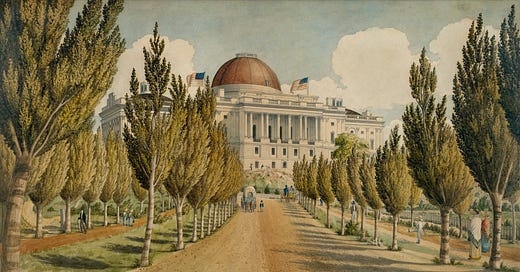Our Contemporary Conundrum
A symposium of social movements and political parties, featuring Sidney Tarrow, William Galston, Megan Ming Francis, Michael Tomasky, and Elisabeth Clemens
March 31, 2022
In this week’s special issue of Public Seminar, Sidney Tarrow discusses the critical connections between movements and parties in American politics, and William Galston, Megan Ming Francis, Michael Tomasky, and Elisabeth Clemons respond.
In his introduction to the symposium, Public Seminar co-executive editor Jim Miller writes that understanding the intersection of movements and parties is crucial to our modern democratic project: “It’s quite unclear precisely what form of the American regime we are all ostensibly defending, at this juncture in history.”
“From the alliance of abolitionists and Republicans that helped precipitate the Civil War and then produced the Reconstruction Amendments, to the transformation of the agrarian movement into the Populist Party in the 1890s, to the impact of the organized labor and civil rights movements on the Democrats in the 1930s and 1960s, to the infusion of the Christian Right into the Republican Party in the 1970s and 1980s, social movements have frequently been key “anchors” in the transformation of the party system.” In an adapted essay from his new book, Movements and Parties (Cambridge, 2021), Sidney Tarrow takes a long view of the relationship between activism and the political establishment.
William Galston finds that the balance of power has profoundly shifted toward social movements over the past toward half-century—but political elites still matter. “For the progressive and socialist Left animated by hope for a ‘political revolution,’ the inability of a Democratic administration and Congress to enact its agenda has yielded disappointment and resentment. Meanwhile, the populist Right has embraced a strategy of permanent revolution until its demands are met, whether or not a majority of the electorate supports them.”
“To be blunt, Black protests become worthy of study for most ADP scholars only when they directly affect the political lives of white people.” Megan Ming Francis shows how much American political development has to gain by paying attention to the long game of movements like Black Lives Matter.
In examining the difference between left-wing and right-wing social movements, Michael Tomasky finds that a preference for opposition over aspiration threatens to swallow the Republican party whole. “The MAGA movement does have a small element of populism that you could call aspirational, for the stiffed white working class, but Trump’s class appeals are so deeply interwoven with his fundamental nihilism—and his open racism—that separating them out from one another is impossible, like trying to untangle vines in a rainforest.”
Help us spread the word by sharing this newsletter with a friend!
“As became absolutely undeniable after January 6, 2021, the escalating grievances and elaborated networks on the right fuel a movement that simultaneously claims patriotism and the defense of democracy while denying the legitimacy of the votes of many other citizens. Elsewhere, the unresponsiveness of institutional politics sometimes leads to disengagement from electoral politics, or to creative forms of anti-politics. ” Elisabeth Clemens argues that the boundary between parties and movements is porous, and that influence can go both ways.
Sidney Tarrow responds to William Galston, Megan Ming Francis, Michael Tomasky, and Elisabeth Clemens. “Are we still dealing—as the title of my book implies—with ‘movements and parties?’ Or with movement-parties, hybrids that have added the passions of movements to the parties, while depriving the parties of one of their traditional functions, as an institutional check on what James Madison would have considered democratic excesses.”




